Welcome to our Numerology Section
Please click on the tabs below to investigate Numerology in detail.
Numerical Meaning Index
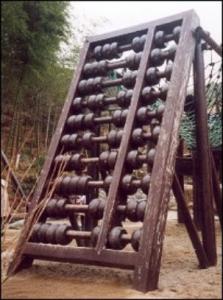 The numbers and their meaning
The numbers and their meaning
From here you can quickly navigate between the numbers to compare your number to another’s to see if you’re a good match or not. (We really
haven’t come that far from crossing letters out of names and saying “love – hate – friendship – marriage” until we run out of letters. Whether 12 or 62, we still want to know how well we will get along with others – especially in romantic relationships!) To learn how to calculate your numbers please see the “How to compute your numbers” section here on this page
 Challenge Number
Challenge Number
The Challenge Number is known by a lot of names. Whether it is called the Destiny Number, the Challenge Number, the Personality Number, or the Name Number, it all represents the same issues. This number is arrived at by converting your full name to numerical elements and then the numbers are added together. For clarity, we’ll refer to this much-named number by its name “Challenge Number.”
In Numerology Circles the Challenge number represents just that…the challenges you are facing in this lifetime. It is most likely to reveal those
aspects of your personality that drive those around you and close to you crazy! The Challenge Number obviously shows main aspects of the personality.
Unlike many of the other numbers in Numerology, the Challenge Number can change. When a woman marries and takes her husband’s name, or associates his name with hers for public use, she has gone through a name change and should recompute her Challenge Number to show the new aspects in her personality as reflected by the name change. The name change need not be formal either. If you are entering into a new social circle and folks are giving you a new nickname, you may want to compute that to get an idea of how others perceive you.
The Challenge Number is also a great way for parents to help ensure they give their child the best start possible. As Hercules and many other mythological heroes always knew, there is power in a name!
Psychic Number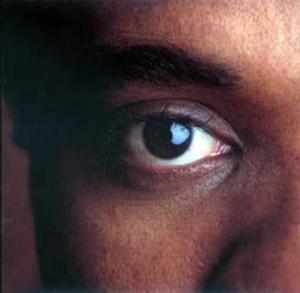
Your Psychic Number is derived from adding the digits of the date of birth together. Your Psychic Number will say much about your sensory self. It will also tell you much about your inner self and how you perceive the Universe. The Psychic Number has a direct correlation to aspects of your life such as sensual desire, emotional relationships, and your inner drive. Focusing on the message of your Psychic Number can help to align the conscious intent with the subconscious drive.
Fate Number
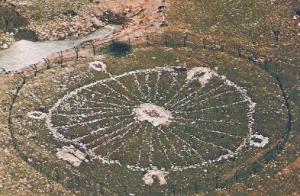 The Fate Number is known by a lot of different names. Also called the Life Number and the Personal Destiny Number, the Fate Number is believed to show the inner core of who you are as a person. Studying your Fate Number can help you to capitalize on natural abilities and attitudes through recognizing them. Your Fate Number can tell you the aspects of your character and personality including your intellectual, emotional, physical, and spiritual well being. Focusing on the message of your Fate Number can help you to understand you emotional reactions to events.
The Fate Number is known by a lot of different names. Also called the Life Number and the Personal Destiny Number, the Fate Number is believed to show the inner core of who you are as a person. Studying your Fate Number can help you to capitalize on natural abilities and attitudes through recognizing them. Your Fate Number can tell you the aspects of your character and personality including your intellectual, emotional, physical, and spiritual well being. Focusing on the message of your Fate Number can help you to understand you emotional reactions to events.
The Fate Number is considered the most basic number in Numerology. Comprised of the sum of the digits of your birth day, month and year, your Fate Number tells you about the inner you. Computing and studying your Fate Number will help you to get back in touch with the real you. Here are quick and simple descriptions of the Fate Number meaning.
1 Imaginative and self-sufficient; powerful; bold; independent; dominant
2 Partnerships and pairings; receptive; intuitive; caring; romantic; sensitive
3 Independent and idealistic; given to creative speech and writing; active
4 Professional life; practical nature; dependable; logical; forward thinking
5 Changeable, fluid nature; curious; love of new experiences and travel
6 Hearth home and family; caring and concerned; creative and idealistic
7 Introspective; personally courageous; psychic ability; inventiveness
8 Fiscal issues; responsibility; perseverance; spirituality; hardworking
9 Impersonal but compassionate; endings and completions; forgiving
11 Motivating; sensitive; leading by example; creativity in lifestyle
22 Event changing; sensible and realistic; good leadership skills
33 Karmic rewards; accord; spiritual illumination
Fadic Number
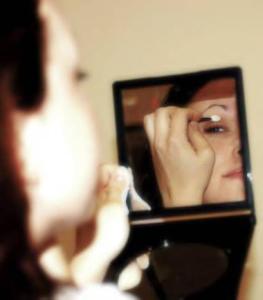 The Fadic Number is considered a more advanced interpretation, but it also can be good for meditation and general insight. Full understanding of the Fadic Number and its nuances on the personality, life-style, and idiosyncrasies may take years of study. Your Fadic number will be a great number for a daily meditation if you are looking for something to help grant better insight into the inner self.
The Fadic Number is considered a more advanced interpretation, but it also can be good for meditation and general insight. Full understanding of the Fadic Number and its nuances on the personality, life-style, and idiosyncrasies may take years of study. Your Fadic number will be a great number for a daily meditation if you are looking for something to help grant better insight into the inner self.
Here’s how to compute your Fadic Number
1. Convert your name to a number.
2. Convert your birth date to a number.
3. Add the two together.
Using John Jacob Wilson as an example, we know that the name number is 8 and the date of birth number is 7. So, again we revert to simple sums. (Remember, you need to reduce the number to a single digit.)
8 + 7 = 15
1 + 5 = 6
So, Mr. Wilson’s Fadic Number is 6.
How to Compute Your Numbers
Equations For Base Numbers
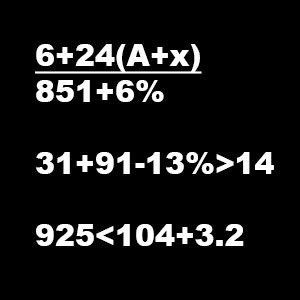 Here we’ll be presenting five different “base” numbers and how they are computed, along with the basic meanings given to them by modern day numerologists.
Here we’ll be presenting five different “base” numbers and how they are computed, along with the basic meanings given to them by modern day numerologists.
These free and fun math exercises are a great way to get through to a child that math can be fun. (I distinctly remember when math got fun for me. It was the 2nd Grade, we were required to do a math problem. “Take the year 2000 – it seemed sooo long ago then – and subtract the year of your birth – then you’ll know how old you’ll be when we enter the new millennium.” From then on math made sense…there was a *reason* instead of just abstract representations.)
Use these buttons to learn how to compute your own base numbers for numerological analysis.
Forecasting Methods
Two easy methods of forecasting
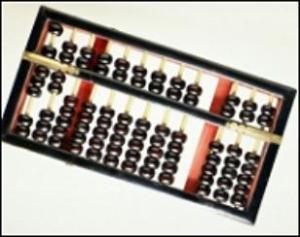 Although complete forecasting analysis should be done by a true numerologists in order that all the the nuances and subtleties be taken into account, there are some fun and easy forecastings the novice can try on their own. Here we present a few of the ways you can use numbers to tell you what is coming ahead.
Although complete forecasting analysis should be done by a true numerologists in order that all the the nuances and subtleties be taken into account, there are some fun and easy forecastings the novice can try on their own. Here we present a few of the ways you can use numbers to tell you what is coming ahead.
First is a great way to recognize the new year with Numerology. We call it the Personal Year Number. If you take your birth month and day and add the current year, the number you come up with can give guidance as to how the year is going to go. To compute a birth date of June 19th you would first add the current year to the birth date, so June 19th would become 06.19.200x (current year). For the year 2005 it would be 06.19.2005. As discussed before, it really doesn’t matter how you add the numbers up, just make sure you get them all. So: 0+6+1+9+2+0+0+5=23= 2+3 = 5 So for this person focusing on the numeral 5 and its meanings would give guidance as to the year ahead. Check the numerical tabs below with the numerals for the annual forecast number meanings.
| 1 | 2 | 3 | 4 | 5 | 6 | 7 | 8 | 9 |
The second easy forecasting, especially since you have already computed your Personal Year (above) is a monthly number forecast. So, to create a Monthly Forecast number, you would take the Personal Year Number (5) and add the numeric value of the month to the number. For an example, our June 19th person wants to know what things are going to be like for him in the month of August.
He would take his year number of 5 and add 8 (the number representation for August): 5 + 8 = 13 (remember, we have to reduce to a single digit), so 1 + 3 = 4. A study of the number 4 from the chart above would help him incorporate what is coming up for him in the month of August. To do the entire computation, given that we have a birthdate of June 19, 1953, and the individual wants to know what is coming up for them in the year 2005 and, specifically, the month of August; you would add:
6 – month of birth
1 – date of birth
9 – date of birth
2 – year number
0 – year number
0 – year number
5 – year number
+8 – month in question
31
3 +1 = 4
Remember…reduce to a single digit !
Annual Numerological Cycles
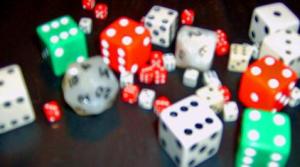 Numerology forecasting is based upon the idea that we go through a series of cycles in our lives. There is much debate whether these cycles are a factor of 18 years, 9 years, or 3 years; it depends on the numerologist’s method or system. The descriptions provided here are based on a nine year cycle. For these descriptions, you would use the numbers developed under our forecasting tab.
Numerology forecasting is based upon the idea that we go through a series of cycles in our lives. There is much debate whether these cycles are a factor of 18 years, 9 years, or 3 years; it depends on the numerologist’s method or system. The descriptions provided here are based on a nine year cycle. For these descriptions, you would use the numbers developed under our forecasting tab.
Here’s the quick down and dirty “how to get the number you need” equation:
Year at a Glance:
Day and month of birth, plus current year = Annual Cycle
Month at a Glance:
Annual Cycle number, plus the month in question = Monthly Cycle
What the Numbers Mean:
Use the Tabs on this page to read descriptions of the individual digits!
| 1 | 2 | 3 | 4 | 5 | 6 | 7 | 8 | 9 |
Remember …..to reduce all numbers to a single digit!
History of Numerology
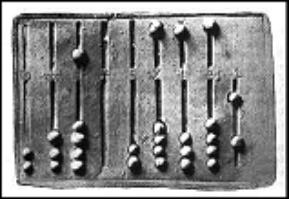 We’ve all played games with numbers.
We’ve all played games with numbers.
I remember as a kid in junior high school we would use the girl’s name and the boy’s name who were “interested” in each other. Then you would cross through the letters the two had in common, letter for letter. Finally when only “solo” letters or numbers were left we would count out loud “love, hate, friendship, marriage” and the word given to the last letter or number was supposed to tell us all how that relationship was going to go. Funny thing is, we were most often right (although I think it has more to do with the “testing the waters” of emotional relationships as kids, *smile*).
From childish games to superstitions, even purported to have been given in divine guidance, numbers have been related to them all. The numerology practiced today is still based in the ancient art of gematria, hence gematria although it has passed and mutated through the ages is still practiced today.
Believed to have its roots in ancient Chaldea, the practice of numerology has been around for much longer than even most practitioners of the art realize. Notarikon is another ancient numerological system, but many of its forms and formulae have been lost to the eons of time. Many put all of modern numerology right at Pythagoras’s feet. Although Pythagoras did much to forward the science of mathematics, he built upon the knowledge that had been passed down through the ages. Each generation keeps building on the knowledge from the one before. It is to the Pythagorean School that we can trace the earliest evidence of use of predictive numerology.
Pythagoras and his followers created a philosophical school in which it was believed that all things are numbers. Mathematicians today are still trying to work out the intricacies of the Pythagorean belief system, but the sacred teachings of the Pythagorean School were lost over the years. We have not been fortunate enough to find original writings from Pythagoras himself, but many others talk about his methods and it is from their writings we have gleaned the few remnants of the teaching of the Pythagorean School. We do know that Pythagoras believed that everything could be reduced to a mathematical equation. Believing that numbers were the key to unlock the secrets of the psyche, Pythagoras and his students worked endlessly to find the key. Whether it was actually found or not is still open to debate, but search for it they did.
A short time ago the world was all a-twitter about a book called The Davinci Code; pop icon Madonna was sporting red bracelets, and people were talking about the tree of life. Jewish Kabbalism (Cabbalism, Quaballa, etc.) is essentially the science of assigned values to the letters of the Hebrew alphabet and then using the system to reinterpret the Old Testament. Cornelius Agrippa is recognized as the one who brought the Kabbala knowledge out of the darkness with his 1533 work, Occult Philosophy. However, later research has found that Agrippa’s work is primarily drawn on the work and hypotheses of good old Pythagoras.
Numerology is one of the easiest of predictive arts. Numerology can also be deceptively easy. As with Astrology, runes, and tarot; the more subtle nuances of numerology are more difficult to understand and take deeper study and time. This is evidenced by some of the greatest mathematicians through the ages trying to unravel and find the pure perfection in numbers. Pythagoras and his followers thought that the soul and essence of a person could be represented in numbers. Although much of the information of his philosophical studies are lost to the ages because like most mystery schools of the time writings were not kept, there’s still some poor kid in a math class, banging their head against the desk because they forgot Pythagoras’ Theorem! We may not need to use his Theorem in our everyday life, but by using some of the theories he is purported to have espoused in regard to numbers, we can improve our everyday life!
Pythagorean Mathmatics
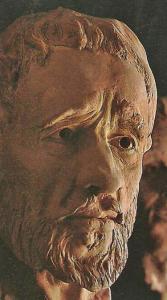 Pythagoras (c.582-c.507 B.C.), founder of the Pythagorean School.
Pythagoras (c.582-c.507 B.C.), founder of the Pythagorean School.
Sounds scary, doesn’t it? Py-thag-o-re-an! Eeeppp!! A word designed to make most middle school math students quake at the sound.
In all honesty, for over 2500 years now mathematicians and philosophers have tried to unravel the Pythagorean mysteries (whip that one out while trying to help that youngster through the Pythagorean Theorem helps break the tension when they realize that the greatest minds of the ages haven’t completely figured Pythagarus out!). It’s not that there haven’t been phenomenally intelligent people trying to solve these mysteries through the ages.
During the last 500 years there has been a tremendous amount of information to come out of secret schools that study the mysteries. However, nothing really new has been discovered, revealed or brought to light. Fragments of the Pythagorean School’s writings still remain but give no clear direction of the more intimate mysteries. Those were never committed to writing, but were purportedly taught orally to a chosen few. Although volumes have been written – within the realm of the hard science of mathematics, within the realm of philosophy, and a combination of both – the central secrets of the Pythagorean School are lost to history.
Actually, if the Pythagorean Mystery School were in operation today, we’d probably call it a cult. The central members of the school lived in austerity with Pythagarus, but this was a select few. They adhered to strict codes of behavior, study and belief in numbers. Other, less committed members were allowed to carry on their lives normally outside of the school. Theses members would attend lectures, classes, devotions and discussions during the day, but would return to their homes and families at the end of the day. Both men and women were believed to be a part of the Pythagorean School. Not nearly so much a school of math, the Pythagorean School was more a school of spirituality and philosophy.
One of the most thorough studies of Pythagorean Theory was compiled by Thomas Taylor in his work Theoretic Arithmetic. This work is considered to be probably the single most important work on Pythagorean Theory. Mr. Taylor felt that Pythagorean Mathematics were so important that he dedicated the opening chapters of his book to the discussion of Pythagorus’ theories of math. This quote from Mr. Taylor’s book shows the combining of philosophy and science that was so important to Pythagorus and his followers.
Perfect numbers, therefore, are beautiful images of the virtues which are certain media between excess and defect, and are not summits, as by some of the ancients they were supposed to be. And evil indeed is opposed to evil, but both are opposed to one good. Good, however, is never opposed to good, but to two evils at one and the same time. Thus timidity is opposed to audacity, to both [of] which the want of true courage is common; but both timidity and audacity are opposed to fortitude. Craft also is opposed to fatuity, to both [of] which the want of intellect is common; and both these are opposed to prudence. Thus, too, profusion is opposed to avarice, to both [of] which illiberality is common; and both these are opposed to liberality. And in a similar manner in the other virtues; by all [of] which it is evident that perfect numbers have a great similitude of the virtues. But they also resemble the virtues on another account; for they are rarely found, as being few, and they are generated in a very constant order. On the contrary, an infinite multitude of superabundant and diminished numbers may be found, nor are they disposed in any orderly series, nor generated from any certain end; and hence they have a great similitude to the vices, which are numerous, inordinate, and indefinite.
The essence of the Pythagorean School was that numbers were a perfect representation of anything and everything. Mathematics was pure, unsullied and distinct. In fact, the Pythagorean Dictum is “Number is all.” For those that are interested, there is some knowledge in existence about the Pythagorean systems, but they can be a dizzying round of confusion to the initiate. If you thought math class with its description of odd, even, whole, or fraction were bad; forget Pythagorean Math! (*smile*) It doesn’t take long to get lost in the intricacies of duads, incomposites, incomposite-composites, evenly-even, evenly-odd and oddly-odd, superperfect, deficient and perfect!
Math Party
 Plan a Math party of your own here using suggestions below.
Plan a Math party of your own here using suggestions below.
Although my daughter has now made me a grandmother, I remember a party we had for her when she was just a child. It was sleepover – seven precocious, cute, and VERY active eight year old girls. Hyper and gaggling like geese they were honestly driving me crazy! We had already made pizza, had popcorn, and the brownies were in the oven. We’d gone through the movies and had even done a round or two of “Richard Simmons’ Sweating to the Oldies.” But the girls were still wound up like roverbial tops. And it was only 8:00p.m.! I was terrified of how long the night was going to be because my husband was active duty and in the field at the time. Literally pulling my hair, I looked at the books on the shelf…an old Zolars “jumped” out at me and my solution was at hand. Here’s a great way to not only get those rambunctious charming little Tasmanian devils full of energy to sit down and start relaxing, try this. (A twist on the theory to make it palatable for the male gender will be presented below.)
Supplies
- Several pieces of paper (a friend took the idea of my plain old white paper and got fancy shaded “happy birthday” paper for her daughter’s party).
- Cheap calculators (you can get little ones in the dollar store for a buck a piece –And the kids can keep them as a party favor – better than a noisemaker)
- Prizes (we always did something so that *everyone* somehow *won* at Something – even if it was “best help with wrapping paper” *smile*)
- Listing of how to do the equations. (We normally put this up on a chalkboard or piece of poster board – one or two of the equations as they fit. The idea is to make this a group affair.)
- Cheat Sheets of the meanings of the numbers for the kids to reference to.
Decorations
Numbers – everywhere. It’s not that big of a stretch. We use numbers in our Birthday decorations all the time. The number of candles on the cake. Cards with numbers, garlands with numbers, etc. There’s even confetti that comes in the shape of numbers! Use your imagination…but make the numbers fun. We found it best to intersperse numbers with traditional decorations for the event.
How to get started:
As parents of pre-teens know, it may be a little difficult to get them “in the mood.” The way we did it was through the music. We’d put on something that had “math” in the lyrics. (Examples are: “One” by Three Dog Night; “The Ants Go Marching One By One;” etc.) Then, when the kids groaned (it’s easier to get their attention than yelling) I’d shake the bag of prizes and we’d get in line and “march” to the math work area. (Fancy name for some cardboard on the floor that’s been covered with numbers – stickers from the hardware store; some paper for computations; pencils – fancy ones make it more festive; and those cheap calculators we
talked about.)
Over the crossed-arms, frowns and irritations, they sit down and glare. (Hey, we are talking 8-12 year olds here.) Once they are settled make a deal. “I’ll let you guys pick the music.” Usually puts them back in a good mood and open to what you’re doing. “Okay. You guys were asking why all the numbers? Well here’s why. I’m going to show you how to have some fun with numbers and really amaze your friends and you’re gonna earn prizes while you do it!” (You normally have their complete and utter attention by now. Prizes and a way to amaze friends seem to work really well for this age group.)
I would normally then go through each of the equations step by step with them, and show them that no matter how they add the numbers together they are still going to come out with the same base number. Normally once they have the idea the adult can easily back slooowwwllllyyyyy out of the room and run-like-heck to the kitchen for sanity and coffee! *smile*
Playing with the equations is a great way to spend some time with friends on a chilly afternoon cozened up to a warm fire with a glass of wine! Just pick which equations you want everyone to try, print out the instructions and enjoy!
The Boy Version
I’m not trying to gender stereotype, but boys and girls do like different things. Here is a perfect solution for a boy’s birthday party that needs to be indoors. The idea came from an organization called the Society of Creative Anachronism, Inc. (a medieval and renaissance re-creation group) where Knights of the organization would go in to local schools and create “Knights of the Math Table.”
Supplies:
- 1 yard of 54” wide fabric for each boy for his “cape” (these can just be cut fabric or finished and dolled up as much as you want – a thrifty friend goes out and buys all the Dracula capes in the 2nd hand stores after Halloween). (If you can find or make some kewl cheap SAFE toy swords they make great party gifts.)
- A Knight and Castle theme for the party. (Not hard to do…there are kits for it. If your son is into Spiderman, no sweat…Spidey is in England, special request of the Queen, secret mission, but they are all Spidey’s “helpers” imagination counts when dealing with kids. *smile* — that scenario works for just about any Super Hero).
- A “sword”. (We always had the real deal around our place, but not everyone has a couple of ceremonial swords laying around.) There’s the cheap plastic ones at the dollar store. There’s the good old two pieces of wood tied or nailed together… Just something to use to “Knight” them with.
- Several pieces of paper – get a note pad with cars and trucks; horses and knights? Castles and dragons? Cheap calculators (you can get little ones in the dollar store for a buck a piece –And the kids can keep them as a party favor – better than a noisemaker)
- Listing of how to do the equations. (We normally put this up on a chalkboard or piece of poster board – one or two of the equations as they fit. The idea is to make this a group affair.)
- Cheat Sheets of the meanings of the numbers for the kids to reference to.
Approach it like a role playing game. In our youth we don’t realize that the main weapon of any good soldier is what’s between his ears, not what’s in his hands! Focus on that theory. (Mel Gibson’s movie Braveheart has a very touching scene where young William’s relative comes to take him away. The bereaved child wants to fight with a sword. The relative tells the young William that he’ll let William wield a sword, once he has learned to use his mind.) From the Immortals of Persia to the modern fighting men and women in Iraq that still holds true! That normally gets the boys willing to snap-to and work it through.
The year: 1430, the beginning of the Renaissance. Knights and chivalry and the Church has brought man out of the dark ages. The boys(or girls) are Squires finishing their final quest for Knighthood. Armed with their calculators (magic numbering devices) and pencil and paper (if you really wanna go the “boy scout” thing: birch bark and charcoal) they must complete the mathematical equations in order to know their ranking within the empire.
Numberical Meanings
Click on a number to investigate the meaning of each in detail
Numerical Meaning Of Number One
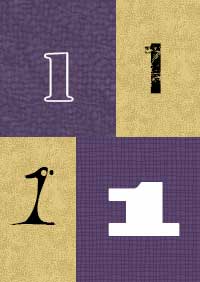 Tarot Association: In the Tarot Deck, like most playing card decks, the “ones” are called “Aces.” Aces are always very strong cards that talk about new beginnings in some form. Strength is generally a character trait that is found when the Aces show up. The Aces are aid to represent the most primordial form of the element they represent (remember, Tarot suits are aligned with the four elements of Earth, Fire, Air, and Water). Beyond the obvious significance for new beginnings, there is also an indication of being able to use the forces available within the element. Aces speak of planting the seeds which will pave the way to achieve the fullness of the ten. Aces are also said to signify the arrival of something new and powerful.
Tarot Association: In the Tarot Deck, like most playing card decks, the “ones” are called “Aces.” Aces are always very strong cards that talk about new beginnings in some form. Strength is generally a character trait that is found when the Aces show up. The Aces are aid to represent the most primordial form of the element they represent (remember, Tarot suits are aligned with the four elements of Earth, Fire, Air, and Water). Beyond the obvious significance for new beginnings, there is also an indication of being able to use the forces available within the element. Aces speak of planting the seeds which will pave the way to achieve the fullness of the ten. Aces are also said to signify the arrival of something new and powerful.
Kabalistic Link: The numeral one (1) is associated with Kether, the Crown. This is the first Serphirah and symbolizes the hitherto unmanifest at the point where it can become known to us. There is no solidity of form within Kether, only a state of inertia of the pure Being or Life; latent with Kether are both of the polarity energies – masculine and feminine. Pure Being stands behind and projects the manifestations. Here the pair of opposities have not yet declared themselves, as in Chokman and Binah; in Tiphareth they reach the perfect equilibrium that is sought. The one, in the 1-2-3 sequence represents the unity which comes before duality and then, into synthesis.
Pythagorean Description: Monad, or 1, is named so due to its stationary condition – separate from the multitude. Mind because of the mind’s capacity for preeminence and stability; Hermaphrodism because it holds the capacity for both feminine and masculine (male/female)Even and Odd for no matter what number you add the single one to, it changes that number from the state of Even to Odd or Odd to Even. God because it represents the beginning and the end, alpha/omega; but Monad itself carries neither beginning nor end; Good because Good is the innate nature of God; Monad was considered a receptacle because it has the potential for receiving, creating the Duad, which is essentially of the material plane. The Monad could be represented as the center because it was thought to be equal; between greater and lesser, intention and remission, it is center or middle. For multitude, Monad was the mean; in time reference, the time is now – the past is behind us, the future is before us, we exist in the now – eternity, which is difficult for humanity to comprehend (c’mon we have a hard time wrapping our heads around the time between us and the dinosaurs walking on earth…do any of us really understand or comprehend what a *billion* years truly represent?) has no recognition of past or future; eternity is an endless stream of the now. As Father and head of the pantheon of the gods, Jupiter was also given as a name for Monad. Vesta as the fire of the home is associated because Monad is considered to be located in the midst of the universe. Monad is neither good nor evil, and remains as if a circle, giving reach to neither side. As it circumscribes, terminates, and comprehends, Monad is the ultimate representation of the latent potential of physical form and is related to form. Being a number that was considered indivisible (1/1=1) it represents piety, love and concord between men. There were other symbolic names such as Mnemosyne, Polyonymous (many names), the god capable of changing his form at will – Proteus; and resembling the contained energy of the Monad is seen in association with a ship or chariot. In the Pythagorean Schools Monad was given lots of different names. Morpho (another name for Venus, Goddess of Love), Axis, Atlas, Lethe, Tartarus, Styx, abyss, chaos, obscurity, chasm and the Tower or Throne of Jupiter were all ways to discuss Monad. The reference to Jupiter is easily seen as the Throne of Jupiter was considered to be the power at the center of the sphere within which the planets revolved. As the origin of all the thoughts that ever were (and, hence, by extension all that will ever be) in the Universe, Monad was also called germinal reason. As the primordial one it was also referenced with Apollo – again a direct solar correlation; Prometheus called the light giver because he is said to have brought man light to illuminate the darkness of the night; Pyralios, who resides within fire itself is aligned with Monad; without existence nothing can be, the potential of existence and numbers is held in Monad, giving it the relation to geniture; substance – substance is primary; the cause of truth; and the musical connection with numbers is expressed in the descriptive term “constitution of symphony.” The Pythagorean School held that One was the end-all and be-all. From the One came all other numbers (1+1=2; 2+1=3; etc.). A modern way of interpreting the Pythagorean belief of the One is to think of the One as the source of the Big Bang theory of Universal creation. It contained all the vastness of power in its primordial state. It represented the essential Unity between all that is (and everyone thought George Lucas had a new idea with “use the Force, Luke.”) the interconnectedness of all things (we are all Star Stuff). It was considered the all-embracing force, strong, active, elemental, the One was the predecessor of the world. The One in the sequence 1-2-3-4 was said to symbolize the flow from the point to line to surface, to solid.
Agrippa held that the One was the origin of all things, the One was God, the One was all. On the Physical Level it represented the left as seen in the numerical sequence 1-4-7.
General Characteristics:In modern Numerology the One personality is considered to be the natural born leader. Blessed with the gifts of energy, enthusiasm, diligence, intuition and self-reliance (with some courage and bravado thrown in), Ones are great to lead a team through to conclusion of the project. However, Ones have their down sides too…too much of anything is not a good thing; One personalities should beware the natural inclination to bossiness, aggression, uncooperativeness, selfish, egotistical and negative.
Equational Associations
Fadic Number: Those who carry One for their Fadic number should look for the lessons of how to wisely guide others who following willingly. Ones purpose is much the same as it is associated with Leadership. Ones normally succeed because they have learned. The mistakes and misguided efforts of youth will give way to a stable and solid maturity. Ones succeed because Ones are willing to do the work.
Challenge; Personality; Name; and/or Destiny Number: Relating to the self and the reasoning of the mind, those with a Challenge Number of 1 are independent people who prefer to rely upon themselves than the aid of others. They have a tendency to take their assertiveness to the extreme of brashness, but it is normally well intended. Sometimes overly self-indulgent (Ones should beware of additions) Ones have a flair for the dramatic, but are definitely the leaders that their Number indicates.
Life Number/Fate Number: People with a Life Number of 1 are bold. They don’t wait around for chance to happen for them, they create it with their innate talent for imagination and powerful energy. Sometimes dominant (a caution for Ones), the pioneering spirit can always be found within Ones.
Psychic Number: Your Psychic Number relates directly to the numbers in your date of birth. Since the numbers of days in a month are limited, there are a limited number of equations or dates that can be reduced to any specific single digit. There are those that are born on the date itself and then nuances between the different birth days. Here are some of the differences of the actual birth dates: 1st – Those born on the First are the closest to the general description for One. 10th – Less independent, more willing to follow another’s lead, some indecision. 19th – Not nearly as egocentric, more easily distracted, balance between talents. 28th – Most talented of the Ones, lots of feminine energy, discreet in dress.
Lover’s Match: It’s often said that love makes the world go round. Here’s a quick idea of how you’re relationship will work out if your name number and your intended’s name number equate out to One. One is the Lovers. You two are tighter than tight. You can fight like heck all the way to the party, but you enter the door as a united couple (although the discussion may well continue on the way home). One relationships are often opposites attracting or birds of a feather so close to be as twins. To compute your love match number add your and your intendeds name numbers together and compute to a single digit as in all other examples. The single digit will give you an overall feel of how the relationship will go.
Here are pairings that create 1 relationships.
1 + 9= unconventional, flexible, bold steps, risk takers, mutual fascination.
2 + 8= mutual industry, companionship and support, willing to nurture each other.
3 + 7= psychic level connection, pushing and pulling, differences cause discord.
4 + 6= accord and agreement, mix of practical and logical, finding a way.
5 + 5= strong emotions – love or hate, one way or the other there’s no middle ground.


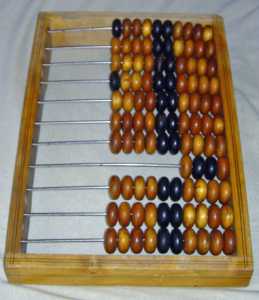
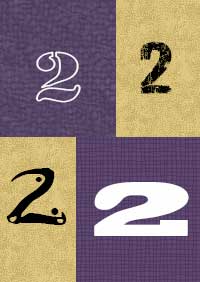 Tarot Association: The Deuces or Twos of the Tarot deck speak about the pure energy of the elements in early combinations. The Two speaks of easy partnerships because they are only in their initial phases and deeper blending between the partners is not needed at this time.
Tarot Association: The Deuces or Twos of the Tarot deck speak about the pure energy of the elements in early combinations. The Two speaks of easy partnerships because they are only in their initial phases and deeper blending between the partners is not needed at this time.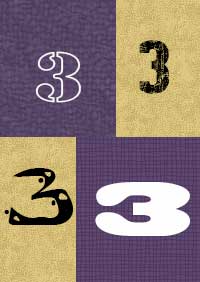 Tarot Association: In the Tarot, Three is the number of completion. The Threes represent strong creativity through the element to which the suit is aligned. These advancements brought through creativity tend to lead to development and growth.
Tarot Association: In the Tarot, Three is the number of completion. The Threes represent strong creativity through the element to which the suit is aligned. These advancements brought through creativity tend to lead to development and growth.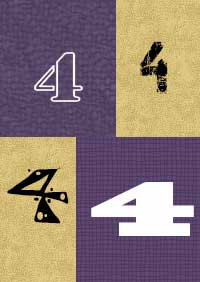 Tarot Association: The Fours stand for stability. The Fours talk about having achieved a certain amount of structure through the element to which the Four is aligned. The Four can carry a warning that one is not being attentive enough or is not applying enough effort to create the situation they hope to manifest. Fours talk about sturdiness (or lack thereof by reversal). The Four is also associated with The Emperor, the man who rules competently and well over his domain.
Tarot Association: The Fours stand for stability. The Fours talk about having achieved a certain amount of structure through the element to which the Four is aligned. The Four can carry a warning that one is not being attentive enough or is not applying enough effort to create the situation they hope to manifest. Fours talk about sturdiness (or lack thereof by reversal). The Four is also associated with The Emperor, the man who rules competently and well over his domain.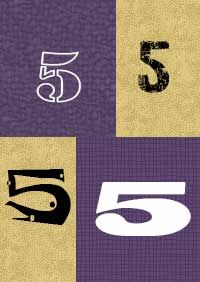 Tarot Association: In the Tarot deck the Fives are always messengers of unusual demands or challenges. Whenever a Five appears in a spread, the individual is sure to be tested within the boundaries of the suit within which it resides. Difficulties are associated with the number Five which is felt to be a point of imbalance and instability. Five in its most positive sense shows us the challenges we need to face to move forward on our path. It is the simple fact that we must face these challenges to move forward that cause discomfort for many with the number five.
Tarot Association: In the Tarot deck the Fives are always messengers of unusual demands or challenges. Whenever a Five appears in a spread, the individual is sure to be tested within the boundaries of the suit within which it resides. Difficulties are associated with the number Five which is felt to be a point of imbalance and instability. Five in its most positive sense shows us the challenges we need to face to move forward on our path. It is the simple fact that we must face these challenges to move forward that cause discomfort for many with the number five.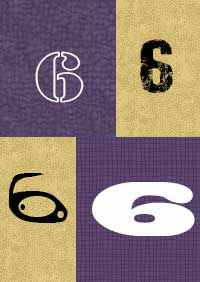 Tarot Association: The Six in the Tarot deck is associated with usability. After the first initial five, the Sixes signify movement into more mature ways of thinking. The Sixes exemplify the beginning of true knowledge and wisdom within the context of the suit to which it is aligned.
Tarot Association: The Six in the Tarot deck is associated with usability. After the first initial five, the Sixes signify movement into more mature ways of thinking. The Sixes exemplify the beginning of true knowledge and wisdom within the context of the suit to which it is aligned.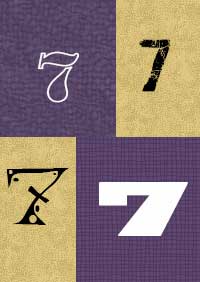 Tarot Association: The Sevens in the Tarot deck talk about application of individual style and effort within the suits to which they belong. By achieving a level of maturity you find strength and personal power within the suits element because of application and lessons learned.
Tarot Association: The Sevens in the Tarot deck talk about application of individual style and effort within the suits to which they belong. By achieving a level of maturity you find strength and personal power within the suits element because of application and lessons learned.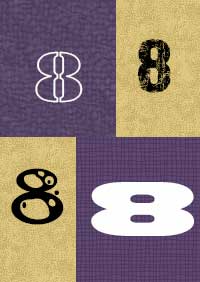 Tarot Association: The Eight is a card of intensity within the realm of the suit to which it belongs. Intensity is truly brought into play with forethought and intention, apply effort in a serious way in order to move forward toward a state of solidity and permanence. It should be noted that the Tarot does give recognition to the fact that an Eight laid on it’s side is the symbol for infinity.
Tarot Association: The Eight is a card of intensity within the realm of the suit to which it belongs. Intensity is truly brought into play with forethought and intention, apply effort in a serious way in order to move forward toward a state of solidity and permanence. It should be noted that the Tarot does give recognition to the fact that an Eight laid on it’s side is the symbol for infinity.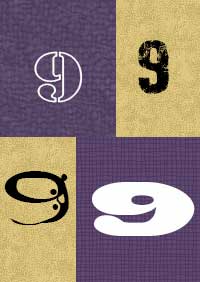 Tarot Association: Nines in the Tarot deck speak of long lasting and substantial expansion of the underlying element. Whether emotional, sensual, mental or material the Nines bring a warning and a blessing. Studying the Nines is a study in looking into the inner self.
Tarot Association: Nines in the Tarot deck speak of long lasting and substantial expansion of the underlying element. Whether emotional, sensual, mental or material the Nines bring a warning and a blessing. Studying the Nines is a study in looking into the inner self.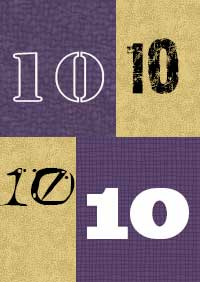 Tarot Association: The Tens in the Tarot deck represent the absolute maximum in manifestation of the quality of the element to which they belong. Tens hold power of fullness and depth within their suits. As the firm and fully developed manifestation, the Ten can mean achievement or failure, whichever, it is the infinite of possibilities.
Tarot Association: The Tens in the Tarot deck represent the absolute maximum in manifestation of the quality of the element to which they belong. Tens hold power of fullness and depth within their suits. As the firm and fully developed manifestation, the Ten can mean achievement or failure, whichever, it is the infinite of possibilities.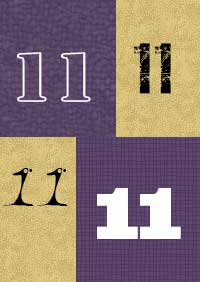 Three Numbers are considered Master Numbers because they are duplications of themselves.
Three Numbers are considered Master Numbers because they are duplications of themselves.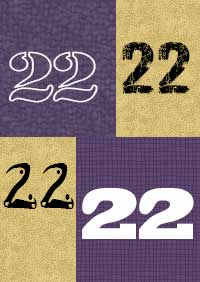 Three Numbers are considered Master Numbers because they are duplications of themselves.
Three Numbers are considered Master Numbers because they are duplications of themselves.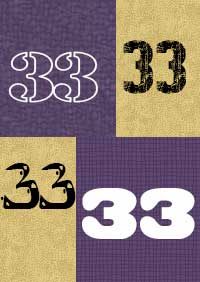 Three Numbers are considered Master Numbers because they are duplications of themselves.
Three Numbers are considered Master Numbers because they are duplications of themselves.